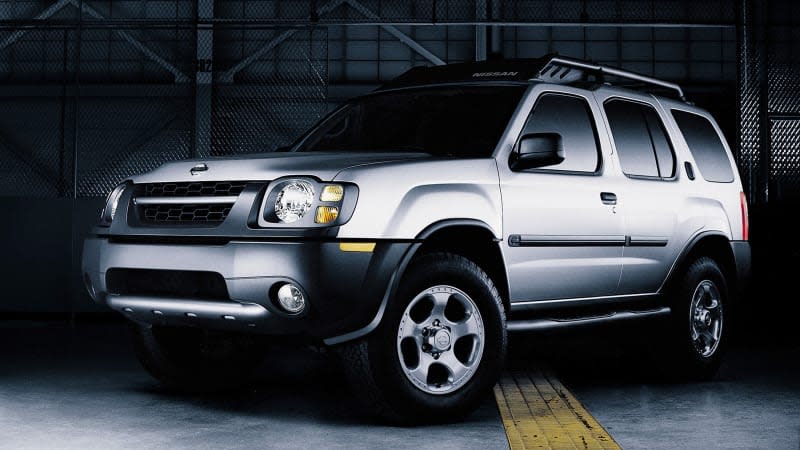Future Classic: 2000-2004 Nissan Xterra

Nissan offers a wide range of crossovers and SUVs these days, but none of 'em are what we'd call cool. Yeah, sure, a Pathfinder Rock Creek is rugged-ish and will look neat parked next to a melting snowbank in the mall parking lot, but it's not the sort of SUV you'd actually beat up and get muddy. Even the full-size Armada is geared more towards tarmac than trails.
That's why we'll always have a soft spot for the Nissan Xterra. Offered from 2000 to 2015, the Xterra's body-on-frame architecture and midsize pickup underpinnings made it a formidable off-roader while its boxy design and purposeful features helped it stand out. It had the same use-me-and-abuse-me attitude of a Jeep Wrangler but didn't feel as spartan inside.


No offense to the second-generation Nissan Xterra – which was sold from 2005 until the SUV's death in 2015 – but it's the previous, 2000-2004 model that we'll focus on here. Frankly, the first-gen Xterra is the one most people remember and the version we always liked best (and it's the one that Nissan drove out of the "world's largest backpack," as you'll see down below). It's also the one sold during a time when the Xterra genuinely felt like an important part of Nissan's lineup; most of the second-gen SUVs were just neglected carryover models.
Why is the Nissan Xterra a future classic?
Penned at Nissan's studio in Southern California, the Xterra was designed with functionality in mind. Its two-tier roof allowed for stadium seating in the second row and it made it so the traditional roof rails could accommodate a removable lower basket between the A and B pillars. The rear door handles were mounted on the C pillars and the rear window was asymmetrical, and don't forget about the prominent bulge on the driver's side of the tailgate, which is where Nissan put a first aid kit. The Xterra always shared its front fascia with the Frontier pickup truck, and in 2002, the SUV gained a new schnoz with round headlights and a smoothed-out front bumper.
Throughout its life, the Xterra's base engine was a 2.4-liter naturally aspirated inline-4 with 143 horsepower, though you could also step up to a 3.3-liter V6, which produced 170 hp initially but was upgraded to 180 hp in 2003. A five-speed manual transmission was standard across the board, though V6 models could be had with a four-speed automatic. If you wanted four-wheel drive – and you did – you had to get the V6.

 Yahoo Autos
Yahoo Autos 
